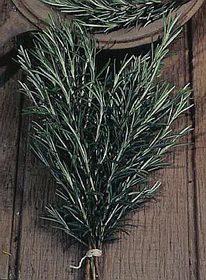Description
Young shoots and leaves are used as a seasoning for stuffings, soups, sausages, sauces, fish and lamb. The flowers have a milder flavor and are used as a flavoring. Both the leaves and flowers are great for teas.
$4.50 – $826.50
Young shoots and leaves are used as a seasoning for stuffings.
Seeds/ounce – 17,500
Pkt Weight – 1/168
Young shoots and leaves are used as a seasoning for stuffings, soups, sausages, sauces, fish and lamb. The flowers have a milder flavor and are used as a flavoring. Both the leaves and flowers are great for teas.
| Options | 1 lb, 1 oz, 1/4 lb, 1/4 oz, 1/8 oz, packet |
|---|

The plant prefers warm, sunny locations and well-drained soil rich in organic matter.
Seeds/ounce – 10,000
Pkt Weight – 1/28
The plant prefers warm, sunny locations and well-drained soil rich in organic matter.
Seeds/ounce – 10,000
Pkt Weight – 1/28

Chervil is best grown seeded in place, as transplanting can be difficult, due to the long taproot.
Seeds/ounce – 12,500
Pkt Weight – 1/16
Chervil is best grown seeded in place, as transplanting can be difficult, due to the long taproot.
Seeds/ounce – 12,500
Pkt Weight – 1/16

Seeds/ounce – 353,500
I do not have an image for this product. If you buy and raise this product this year and send me an image of it, I will give you a free pack for next year. Send to” errolahlers@morgancountyseeds.com. Please include your name, address, and product name.
Pkt Weight – 1/189
Seeds/ounce – 353,500
I do not have an image for this product. If you buy and raise this product this year and send me an image of it, I will give you a free pack for next year. Send to” errolahlers@morgancountyseeds.com. Please include your name, address, and product name.
Pkt Weight – 1/189

The leaves are used as a herb, in teas and also as a flavouring. The plant is used to attract bees for honey production. It is grown as an ornamental plant and for its oil (to use in perfumery). Lemon balm has been cultivated at least since the 16th century.
Lemon balm seeds require light and a minimum temperature of 20 °C (68 °F) to germinate. The plant grows in clumps and spreads vegetatively (a new plant can grow from a fragment of the parent plant), as well as by seed. In mild temperate zones, the plant stems die off at the start of the winter, but shoot up again in spring. Lemon balm grows vigorously.
The leaves are used as a herb, in teas and also as a flavouring. The plant is used to attract bees for honey production. It is grown as an ornamental plant and for its oil (to use in perfumery). Lemon balm has been cultivated at least since the 16th century.
Lemon balm seeds require light and a minimum temperature of 20 °C (68 °F) to germinate. The plant grows in clumps and spreads vegetatively (a new plant can grow from a fragment of the parent plant), as well as by seed. In mild temperate zones, the plant stems die off at the start of the winter, but shoot up again in spring. Lemon balm grows vigorously.




Reviews
There are no reviews yet.